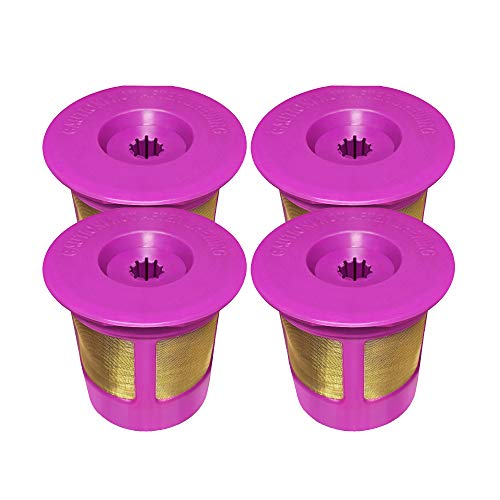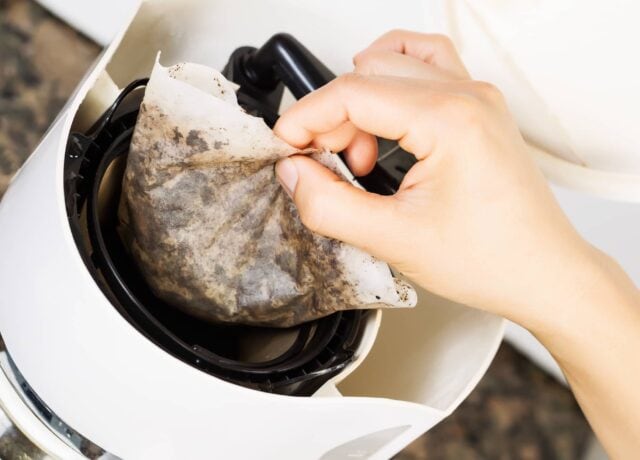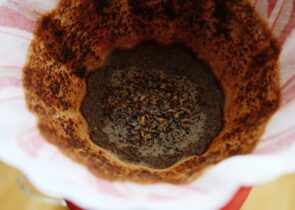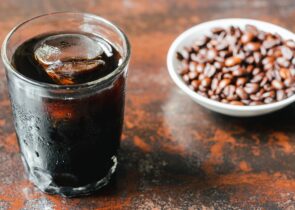
Despite seeming so simple, choosing the right coffee filter can be quite a confusing task. Why? Because there are so many options! Metal or paper coffee filters, bleached or unbleached, cone or basket; things can quickly spiral into an overwhelming mess.
But don’t worry, Roasty reader, as usual, we’ve got you covered, and we’ll help you find the perfect product for filtering coffee grounds from your brew.
Meet the Materials: Paper vs. Metal vs. Cloth
You’d be surprised how intense the filter debate can get. Everyone has their material preference, and while some trust a product that’s paper or metal to get the job done, others swear by the cloth filter.
But which one is the best for brewing delicious coffee? We really can’t tell you that. Of course, the answer to that question is highly subjective, as the coffee community is far too large and has too many different preferences to arrive at a consensus. What we can do, though, is give you a little more insight into each of the three most common coffee filter types so you can decide for yourself what’s best for brewing all your cups of coffee.
Paper
Disposable coffee filters made of paper are probably the most common, as they tend to be pretty cheap and easy to obtain. These bad boys fall into two different categories: bleached and unbleached.
To Bleach or Not to Bleach?
The stack of white coffee filters wedged between your office’s coffee machines is bleached. How do we know? Because natural paper doesn’t look white!
These paper filters undergo a bleaching process using either chlorine (yep, the same stuff you use to keep your pool clean) or oxygen, and that’s what makes them shift from their natural tan hue to bright white.
When it comes to bleached filters, ones that use oxygen-based bleaches are the better option, as oxygen has a less harmful environmental impact than chlorine. Despite being better than chlorine, however, not even oxygen-bleached filters are technically good for the environment. This is because, even though only a small amount of bleach is used to manufacture them, they contain enough of the chemical to cause pollution once they’re discarded.
Unbleached filters don’t have the same bright white appearance as bleached ones — they sport a brown color instead — but they’re much more natural and environmentally friendly. As its name implies, an unbleached paper filter doesn’t go through a bleaching process, and when it breaks down, the chemicals put back into the ground are nowhere near as harmful as bleach.
Most casual coffee drinkers don’t mind these brown filters, but beware: some java lovers swear these babies give the resulting brew a paper-like taste. Luckily, this is easily preventable. All you have to do is wet the entire filter before brewing!
Unbleached or bleached, it doesn’t matter. Just make sure your paper filters are the right size and the correct thickness so you can brew a great cup of your favorite coffee every time.
Metal
Next on our list of coffee filter types is the metal filter, a choice some coffee enthusiasts swear produces a brew with a richer taste than any of its counterparts. This is because, unlike paper filters, a metal mesh structure won’t absorb any flavorful coffee oils; the more of these present in your cup, the more full-bodied your joe will taste and smell!
Metal mesh filters, typically stainless steel or aluminum, also win a blue ribbon for environmental-friendliness, as they can last a lifetime if properly maintained; this means way less paper waste sitting in a landfill.
Unfortunately, most metal mesh filters aren’t fine enough to filter everything out of your cup. So, while they may keep all of the ground coffee beans out, their larger pores do let micro-grounds (tiny coffee grounds that may accumulate at the bottom of your cup) seep in. Some people don’t mind the heavier mouthfeel this causes, but others prefer a lighter, cleaner-tasting cup. If you fall into the latter camp, a reusable metal filter probably won’t be your cup of tea.
Cloth
Though not commonly used in the United States, cloth coffee filters are a middle ground between paper and metal filters. They filter out all of the coffee particles, plus the micro coffee grounds, while barely absorbing any of your joe’s flavor-filled oils.
For example, most cloth filters, like the popular Coffee Sock cloth filter, are made from organic cotton. But linen and hemp are also popular choices for many cloth coffee filter options currently on the market.
As we said, these aren’t very common in comparison to metal or paper coffee filters. People probably steer clear of this reusable coffee filter because they’re a bit difficult to maintain. You have to wash them very well every time you brew coffee, and while you don’t want them to stay moist after being cleaned, you don’t want them to dry out too much, either.
These products also tend to hold onto the flavors of your previous brews. That’s not necessarily a big deal if you brew the same kind of coffee every single day, but if you’re someone who likes to switch it up regularly, this could wreck your brewing process.
The Shape of Your Coffee Filter
Now, when you’re picking out the best tool for filtering coffee grounds out of your brew, the material isn’t the only thing you’ll need to take into consideration. Shape matters, too! Let’s take a closer look at the popular shapes of coffee filters and what they’re good for.
Cone
Cone coffee filters tend to be the favorite of the most dedicated at-home baristas. Two basic types of filters fall into the cone category. One is a standard cone shape and looks a little like a party hat. The other is different in the sense that, instead of coming to one point at the tip, it has two sides that taper into a shorter line.
If you have a manual coffee machine, you’ll probably want to use the first style of cone filters. The second type is primarily seen in permanent filters designed for automatic brewers. Either way, the filters essentially work the same way.
Basket
The basket shape is probably what comes to mind when someone mentions a coffee filter. These products, also called flat-bottom filters, are either shaped like cupcake liners with folds around the sides or smooth-edged buckets.
Coffee connoisseurs tend to prefer conical coffee filters over baskets because these filter shapes provide different levels of coffee ground saturation. The wide, flat bottoms of basket coffee filters spread the java out more, making the extraction of coffee grounds uneven. Even if your brewer has a showerhead to spread the water out, the streams just go straight down, leaving gaps of less extracted coffee between areas of potentially over-extracted joe.
On the other hand, their conical counterparts force the hot water through the coffee more effectively.
Disk
The last of the types of coffee filter shapes we’ll cover is the disk. These are mainly used if you’re relying on an AeroPress to brew your fresh coffee in the morning, but you’ll occasionally see them used as replacements for French press filters.
Disk filters are much smaller than the other two more popular coffee filters. Since they don’t follow the standard filter sizing rules we’re about to discuss, you typically have to buy them specifically for your brewing tool.
Sizing Up Your Filter
Naturally, your preferred coffee filter, no matter the shape and material, has to be able to work with your method of coffee brewing properly. And what kind of detailed guide would this be if we neglected to mention how to determine filter size? Since coffee makers come in different sizes, there are, of course, different-sized filters for each.
Determining Basket Coffee Filter Size
Sizing up your basket filter is relatively simple, as there are only two sizes: junior, which is for coffee makers that produce less than six cups of brew, and regular, for larger machines that can hold more than six cups of coffee.
Determining Conical Coffee Filter Size
Conical filters have a more extensive size chart. Each size is numbered — #1, #2, #4, and #6 — and each number indicates what brewers you can use the filter with. Here’s how it works:
- #1: Designed for both electric and non-electric single-serve coffee makers
- #2: Designed for two to six-cup electric coffee makers and one to two-cup non-electric coffee makers
- #4: Designed for eight to 10-cup non-electric brewers or eight to 12-cup electric coffee machines
- #6: Designed for 10-cup or larger pour-over coffee makers or other non-electric brewers
The most common conical filter sizes you’ll come across are #2 and #4. Those will cover most people’s brewing needs.
Roasty Rankings: Our Picks for the Best Coffee Filters
Before you go into the buying portion of this article, keep in mind that there are many permanent filters designed specifically for one brand or line of products. This is especially true for larger brands like Mr. Coffee, Cuisinart, or Hamilton Beach.
With that said, if none of our suggestions work in your automatic or manual coffee machine, we highly recommend researching popular choices designed for your brewing device.
Now, without further ado, allow us to introduce you to our favorite products for filtering gritty grounds and producing cup after cup of full-flavored coffee.
GOLDTONE Reusable Basket Coffee Filter
If you’re looking for a reusable metal filter to use in your automatic coffee maker, look no further than this one from GoldTone. It fits right into most Mr. Coffee brewers, which is great news since so many at-home baristas rely on these famous coffee makers to produce their joe.
This stainless steel golden-mesh filter keeps your coffee sesh mess-free, as you can easily clean it under running water or in the dishwasher. Plus, it lets all of the coffee bean flavors seep right into your cup, ensuring that your java is packed with rich flavor — delicious!
Bolio Organic Hemp Pour-Over Coffee Filter
This reusable cloth filter is a perfect pick for those who trust a Chemex pour-over dripper to provide their morning cup of coffee. Experienced coffee brewers will notice just how good coffee tastes when filtered through these, as they allow all of the oils to make it into your brew. They enhance the flavor of your joe while keeping even the finer coffee particles from ever touching your lips.
We love Bolio’s product because it’s 100 percent hemp; that makes it stronger than the typical cotton cloth filter and more eco-friendly, too!
Melitta Paper Coffee Filters
We couldn’t leave paper filter lovers out of the fun — that’s why we’ve included these bleached filters from Melitta on our list of must-haves! Numerous brands manufacture paper filters, but because Melitta is pretty well-known and highly rated, you know you can trust these basket filters to handle your at-home brewing needs.
You might have noticed that these are white rather than the papers natural tan color. That’s because of the brand’s chlorine bleaching process. If bleach makes you wary, there’s no need to worry; Melitta also has unbleached brown paper filters on their product roster!
Rupert and Jeoffrey’s Unbleached Coffee Filters
If you’re a Roasty reader who finds themselves leaning more toward unbleached filters, give Rupert and Jeoffrey’s Trading Co. a chance. This brand’s disposable coffee filters are designed for use in larger coffee makers (think eight to twelve cups), and they have sturdy sides that won’t collapse during brewing. That means no gritty ground coffee makes it into your cup.
Unlike the permanent coffee filters built into some brewers, these paper filters keep most oils, micro-grounds, and general coffee grime out of your joe, making them a popular filter among coffee aficionados who prefer a lighter, cleaner-tasting cup.
Barista Warrior Hario V60 Pour-Over Coffee Filter
If you do much of your coffee making with a Hario V60 dripper, your preference for coffee filters is cone-shaped and reusable. You’re also concerned with using products with a more positive environmental impact. Well, you’re in luck: Barista Warrior has exactly what you need.
This titanium-coated stainless steel filter is designed for use in the Hario V60 02 and 03 models, but no worries if you use a coffee dripper from one of the many other popular brands out there; this filter fits into most six, eight, or ten-cup products. Many swear this bad boy’s dual filtration — complete with stainless steel mesh and a laser-cut filter — takes the quality of coffee to the next level.
It’s also a fine contender in terms of durability; no matter how often you pull one of these conical filters out and make a cup of coffee, it’ll hold its shape.
Cafellissimo Stainless Steel Pour-Over Filter
Single-serve pour-over users, rejoice — this one is for you! As far as metal mesh single-serve coffee filters are concerned, we think this one from Cafellissimo is one of the best, and once you use it to brew a cup of full-flavored coffee, you’ll undoubtedly agree.
You can take this convenient little filter pretty much anywhere. And, we like that this one to two-cup sized coffee filter has a double mesh design that extracts delicious joe (and filters every last particle of ground coffee out of your cup) every time.
Say goodbye to disposable coffee filters and hello to strong, rich coffee flavor in every single cup!
iPartsPlusMore Reusable K-Cups
Keurig pod brewers have taken the coffee industry by storm, which is why we’d be remiss to exclude something that’s Keurig compatible on our list of coffee filter choices. Plenty of popular coffee filter manufacturers sell reusable K-Cups, but we especially like these from iPartsPlusMore.
First of all, these typically come in packs of at least four, which means coffee enthusiasts will be all set for brewing for a long time. Secondly, these little things are eco-friendly, reducing both your carbon footprint and environmental impact. Third, and most importantly, these metal mesh filters allow you to brew your own ground coffee instead of pre-packaged, sometimes stale K-Cup pods, so you’ll be sipping a cup full of fresh, rich coffee bean flavors.
Out of Filters?
Picture this: you’ve used our buying guide to stock up on your favorite disposable filters, and now, upon beginning your morning coffee routine, you realize you’re out of them! Or worse, you brought your brewer with you on a trip, but you forgot to pack the reusable coffee filter in your suitcase! Both scenarios are tragic for a hardcore coffee addict, but fear not: not having your basic filter on hand doesn’t mean you have to skip your morning joe altogether!
Check out our article on finding the best coffee filter substitute for your needs. There, we answer questions like “Can you use a paper towel as a coffee filter?” and “Can you make coffee without a filter?” because we believe nothing — not even a lack of a proper filter — should stop you from getting your daily caffeine kick!
And just for your information, you can make coffee without a filter; you’ll just need to try something a bit more old-school, like the cowboy method, for instance.
A Coffee Filter Q&A
What kind of coffee filter is best?
Just as we said earlier, we really can’t tell you which filter is best for brewing your cups of coffee every day. Since there are distinct differences between each filter and the types of coffee they create, the one you choose largely depends on your preferences. So, the best way for you to find the product you like the most is trial and error, and don’t stop experimenting until you find the one that gets the job done and suits your tastes.
Which coffee filter is easier to clean?
Obviously, brewing coffee with paper filters gives you the quickest clean-up — all you have to do is lift the filter out of the machine’s brew basket and toss it into the garbage!
But in terms of reusable products, metal coffee filters are easier to clean than cloth ones. All you need is hot, soapy water to get them clean. Just be sure to rinse them well and dry them thoroughly with a soft cloth.
Cloth coffee filters only require a thorough rinse with water (though you can use mild detergent if you feel your filter needs a deeper clean), but the air-drying process takes much longer. And every two months or so, you’ll also need to boil the cloth filter in fresh water for at least ten minutes to get rid of any left-behind oil from coffee beans you brewed before.
What’s the best coffee filter in terms of brewing a healthy cup?
Despite all the good things coffee can do for your health, you probably know by now that it’s got a few nutritional downsides as well.
Your java contains cafestol, an oil known for raising cholesterol levels, and of our three coffee filter choices — paper, metal, or cloth — paper removes more of this stuff from your cup. Because of this, many coffee industry experts believe paper filters are the best option for those concerned about their health.
But even a package of paper filters comes with a side of concern. Some worry the chemicals from bleached coffee filters can make their way into their mug. If that’s something you’re worried about, you can either buy some unbleached coffee filters or take your chances with cafestol and use something made of metal or cloth.
Will the type of coffee filter affect the taste?
Size, shape, and whether or not they’re made for one-time use; are all things to consider when you’re shopping for coffee filters. But none of these things are all that important if they don’t make coffee that tastes good, right?
Each coffee filter material produces brews that taste very different from each other, so which you choose depends heavily on how you want your morning cup to taste.
Because metal coffee filters don’t remove as much cafestol from the joe, more oils end up in your brew, producing a flavor that’s much bolder than something made with, say, a paper filter. The richness of coffee oils also makes the contents of your cup feel fuller in your mouth.
On the other hand, paper filters filter more from your joe, resulting in coffee with a brighter flavor and a lighter body. Most coffee drinkers prefer this, which is probably why paper is the most common of all coffee filter options.
As we mentioned above, cloth filters are right between paper and metal, even in terms of coffee flavor. They still produce a brew that’s rich and full-bodied, but because they keep micro-grounds from getting into your mug, coffee filtered with cloth is lighter than that filtered with metal.
Wrapping Up
So, now that we’ve covered all the basics of coffee filters, taken a closer look at their standard sizes and shapes, and recommended a few popular choices, you can decide for yourself what works best for you. And, who knows? After trying something new, you might discover the filter you use makes such a noticeable difference that you can’t go back to your old ways!
And even if you don’t decide to try a new filter, we hope that, at the very least, this article expanded your coffee knowledge just a bit.
No matter what filter you choose, we hope the resulting brew is everything you want it to be. After all, life is too short to settle for a lower quality of coffee.
Happy Caffeinating!

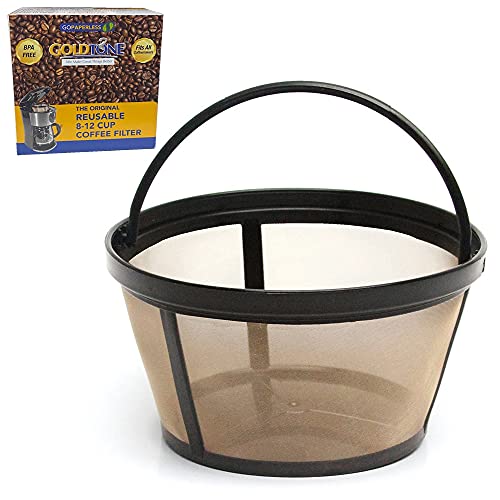
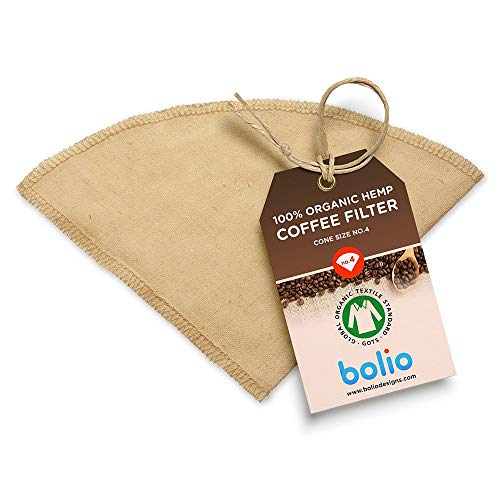
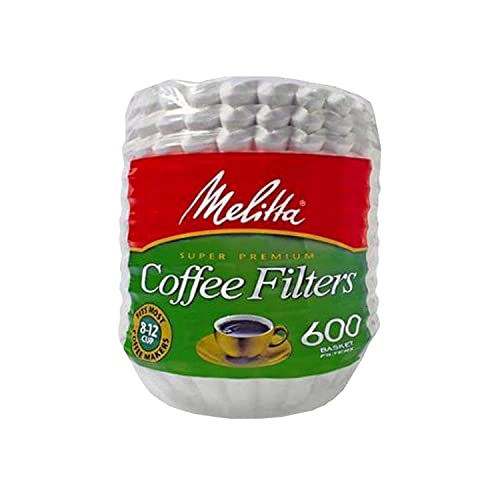
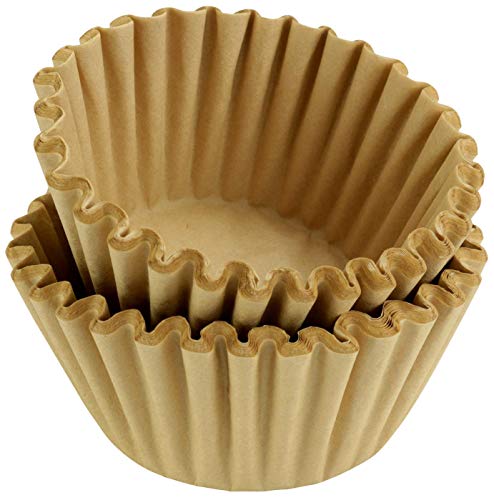
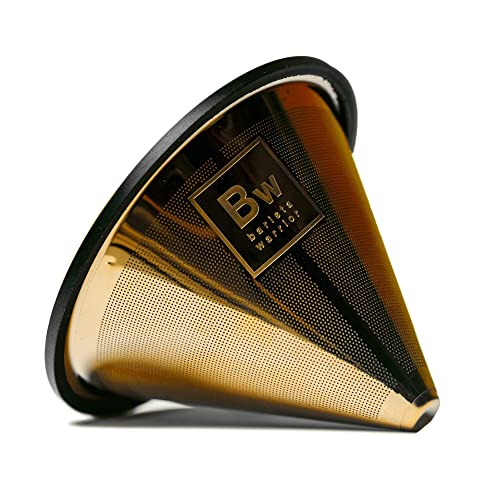
![The Complete Guide To Choosing The Right Coffee Filter 7 Cafellissimo Pour Over Coffee Dripper, Slow Drip Brew Coffee Filter, Paperless Reusable Metal Cone Filter, Stainless Steel with Double Mesh Liner and Cleaning Brush [1-2 Cups]](images/41vxxcbc03l.jpg)
